Mirella Sichirollo Patzer's Blog, page 32
February 6, 2013
Shirley Temple Black - A Depression-Era Woman of Distinction by Normal Welty
Shirley Temple
Black—A Depression-Era Woman of Distinction
A guest post by Norma Welty
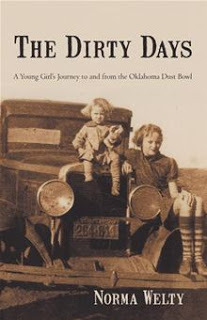
Author of
The Dirty Days
A Young Girl's Journey to and from the Oklahoma Dust Bowl

There
are several distinguished American women whose biographies would
provide a wealth of information about their significant contributions to our
society. But I have chosen to proclaim Shirley Temple as my Depression-era woman
of distinction—a noteworthy American child who became a solid role model for
American women. Especially in the eyes of the many living women who are of the
same generation as Ms. Temple Black.
Many
girls, like myself, who grew up extremely poor in the Dust Bowl
during the 1930s Great Depression revered Shirley Temple. We
knew about her through listening to the girls from the more well-off families
whose parents took them to see the young actress's movies. These more fortunate
girls often brought pictures of Shirley Temple to school and talked profusely
about her and her movies.
From a
poor girl's perspective, the young actress possessed a
wholesome beauty and goodness in character that came from within, and she
had an admirable talent and obvious athletic strength. As residents
of the heat belt, we could appreciate Shirley Temple's endurance of hot, sweaty
dance lessons and challenging rehearsals.
More
importantly to girls from poor families, her success engendered in us a
subconscious hope for better times—adequate clothing, healthy diet, dust-free
air and enough water for crops and human consumption. And while laboring
in the field we may have grumbled a bit, but we persevered just as we
knew young Shirley would have done, had she been in our unfortunate circumstances.
Off
screen, Shirley Temple has lived her adult life in ways that have confirmed our
assessment of her in our youth. Her physical strength and mental
perseverance sustained her during her recovery from breast
cancer; and she was bravely one of the first prominent women to talk openly
about breast cancer and its survival to the media. And, she steered
herself toward several other noteworthy endeavors.

Ms.
Temple Black ran for Congress when the majority of voters weren't yet
prepared to vote for a woman rather than a male opponent—and was
defeated. But she hadn’t put all her eggs in one basket. Later, she was
appointed to represent the United States in the United Nations, was
the first woman appointed US Chief of Protocol and she later
served as US Ambassador to Ghana and US Ambassador to Czechoslovakia. She did
it all without fanfare, and to name but a few, she may have paved the way for
Madeleine Albright, Condoleezza Rice and Hillary Rodham Clinton.
Think
about it. As a child, Shirley Temple persevered throughout a grueling
movie-making schedule of singing, dancing and acting while winning the hearts
of millions. She later served her country with dignified aplomb, received accolades
such as the Actors Guild SAG Life Achievement Award and Kennedy Center Honors,
and she published a well-received autobiography. Now a widow in
her eighties, she is working on a second volume.
I’m
also in my eighties and have written my first book, which includes in its story
many references to Shirley Temple—one of my childhood heroes. To me she is much
more than a former exceptionally talented child movie star or a commercialized
icon of by-gone days. And I believe numerous older women, myself included, who
grew up during The Great Depression still think of her as their childhood symbol
of hope for better times.
WE LOVE COMMENTS

From History and Women









Black—A Depression-Era Woman of Distinction
A guest post by Norma Welty

Author of
The Dirty Days
A Young Girl's Journey to and from the Oklahoma Dust Bowl

There
are several distinguished American women whose biographies would
provide a wealth of information about their significant contributions to our
society. But I have chosen to proclaim Shirley Temple as my Depression-era woman
of distinction—a noteworthy American child who became a solid role model for
American women. Especially in the eyes of the many living women who are of the
same generation as Ms. Temple Black.
Many
girls, like myself, who grew up extremely poor in the Dust Bowl
during the 1930s Great Depression revered Shirley Temple. We
knew about her through listening to the girls from the more well-off families
whose parents took them to see the young actress's movies. These more fortunate
girls often brought pictures of Shirley Temple to school and talked profusely
about her and her movies.
From a
poor girl's perspective, the young actress possessed a
wholesome beauty and goodness in character that came from within, and she
had an admirable talent and obvious athletic strength. As residents
of the heat belt, we could appreciate Shirley Temple's endurance of hot, sweaty
dance lessons and challenging rehearsals.
More
importantly to girls from poor families, her success engendered in us a
subconscious hope for better times—adequate clothing, healthy diet, dust-free
air and enough water for crops and human consumption. And while laboring
in the field we may have grumbled a bit, but we persevered just as we
knew young Shirley would have done, had she been in our unfortunate circumstances.
Off
screen, Shirley Temple has lived her adult life in ways that have confirmed our
assessment of her in our youth. Her physical strength and mental
perseverance sustained her during her recovery from breast
cancer; and she was bravely one of the first prominent women to talk openly
about breast cancer and its survival to the media. And, she steered
herself toward several other noteworthy endeavors.

Ms.
Temple Black ran for Congress when the majority of voters weren't yet
prepared to vote for a woman rather than a male opponent—and was
defeated. But she hadn’t put all her eggs in one basket. Later, she was
appointed to represent the United States in the United Nations, was
the first woman appointed US Chief of Protocol and she later
served as US Ambassador to Ghana and US Ambassador to Czechoslovakia. She did
it all without fanfare, and to name but a few, she may have paved the way for
Madeleine Albright, Condoleezza Rice and Hillary Rodham Clinton.
Think
about it. As a child, Shirley Temple persevered throughout a grueling
movie-making schedule of singing, dancing and acting while winning the hearts
of millions. She later served her country with dignified aplomb, received accolades
such as the Actors Guild SAG Life Achievement Award and Kennedy Center Honors,
and she published a well-received autobiography. Now a widow in
her eighties, she is working on a second volume.
I’m
also in my eighties and have written my first book, which includes in its story
many references to Shirley Temple—one of my childhood heroes. To me she is much
more than a former exceptionally talented child movie star or a commercialized
icon of by-gone days. And I believe numerous older women, myself included, who
grew up during The Great Depression still think of her as their childhood symbol
of hope for better times.
WE LOVE COMMENTS

From History and Women









Published on February 06, 2013 11:05
The Dirty Days: A Young Girl's Journey to and from the Oklahoma Dust Bowl by Norma Welty
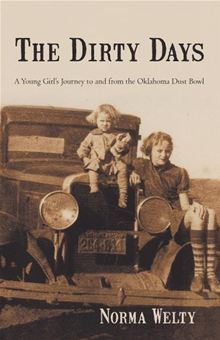
"It is 1933. As a beat-up truck travels down a road away from Arkansas, seven-year-old Molly May Dowden can only hope a better future awaits her parents in Thistleway, Oklahoma. They have no idea of what is about to come. With their money safely tucked away in a mattress, the Dowdens feel hopeful as they pass through Oklahoma City. But their hopes for an improved life disintegrate a hundred miles further west when a dust storm swirls dangerously around their truck. Forced to take shelter inside a dingy cafe with a band of quirky strangers, the Dowdens soon realize that life in Oklahoma may not be as easy as they had hoped. After the family finally settles in their two-room workers’ shanty, one hardship piles up after another as they battle spider bites, rancid water, strange rashes, loneliness, and death. Left with no choice but to bravely persevere through the never-ending drought and dust, Molly and her family soon discover a fortitude they never knew they had.
In this historical tale based on true events, a young girl embarks on a coming-of-age journey where she and her loved ones must nobly fight to survive the Great Depression and the Oklahoma Dust Bowl."
Set in 1930’s rural America, Dirty Days tells the story of a young girl coming of age during the Great Depression - a time of extreme poverty and hardship. Horrible dust storms and the daily struggle to keep the dirt and dust from drinking water, bedding, dishes, and furniture bring the details of day-to-day life into vivid reality. The portrayal of the strife faced by so many because of extreme poverty, foreclosures, hunger, and measly possessions strikes at one’s very heart.
What made this novel so poignant is that the author based it upon her own firs-thand experiences as she and her family grappled to survive. With the addition of fictional characters, she brings to life the hardships faced by farmers who literally watched their livelihood blow away with their topsoil when the winds howled.
Norma Welty gives voice to an era of American history so that our children and grandchildren can understand all that helped shape our history. It is a stark reminder that despite this fast-paced, technological era that we currently live in, our elders faced what seemed like insurmountable strife to provide for their family and future generations.
WE LOVE COMMENTS

From History and Women









Published on February 06, 2013 10:57
February 4, 2013
HerStory Anthology
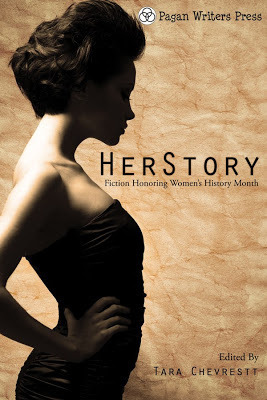
I'm so very excited to announce the release of HerStory, an anthology featuring biographies of integral women throughout history. The anthology is being released by Pagan Writers Press and will be released in March 2013. Stay tuned for more information by following my blog.
My submission for this anthology is a short story about a 10th century Queen and Saint named Matilda of Ringelheim. I have been working on a novel of Queen Matilda's life for several years now. The novel will be entitled THE PROPHETIC QUEEN and it is very near completion. The novel will be published sometime in 2014.
For a peek at Queen Matilda's bio and other sneak peeks at other stories that will be included in this fascinating anthology, please visit HerStory Anthology!
Happy reading!
WE LOVE COMMENTS

From History and Women









Published on February 04, 2013 14:23
May Dugas - A Most Dangerous Woman (Parlor Games by Maryka Biaggio)
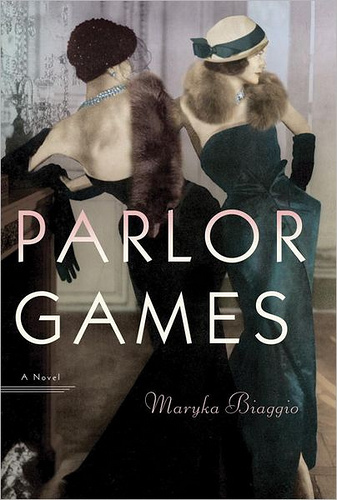
Back Cover Synopsis
A sweeping historical novel about a beautiful con artist whose turn-of-the-century escapades take her around the world as she's doggedly pursued by a Pinkerton Agency detective
The novel opens in 1917 with our cunning protagonist, May Dugas, standing trial for extortion. As the trial unfolds, May tells her version of events.
In 1887, at the tender age of eighteen, May ventures to Chicago in hopes of earning enough money to support her family. Circumstances force her to take up residence at the city’s most infamous bordello, but May soon learns to employ her considerable feminine wiles to extract not only sidelong looks but also large sums of money from the men she encounters. Insinuating herself into Chicago’s high society, May lands a well-to-do fiancé—until, that is, a Pinkerton Agency detective named Reed Doherty intervenes and summarily foils the engagement.
Unflappable May quickly rebounds, elevating seduction and social climbing to an art form as she travels the world, eventually marrying a wealthy Dutch Baron. Unfortunately, Reed Doherty is never far behind and continues to track May in a delicious cat-and-mouse game as the newly-minted Baroness’s misadventures take her from San Francisco to Shanghai to London and points in between.
The Pinkerton Agency really did dub May the “Most Dangerous Woman,” branding her a crafty blackmailer and ruthless seductress. To many, though, she was the most glamorous woman to grace high society. Was the real May Dugas a cold-hearted swindler or simply a resourceful provider for her poor family?
As the narrative bounces back and forth between the trial taking place in 1917 and May’s devious but undeniably entertaining path to the courtroom—hoodwinking and waltzing her way through the gilded age and into the twentieth century—we're left to ponder her guilt as we move closer to finding out what fate ultimately has in store for our irresistible adventuress.
Review
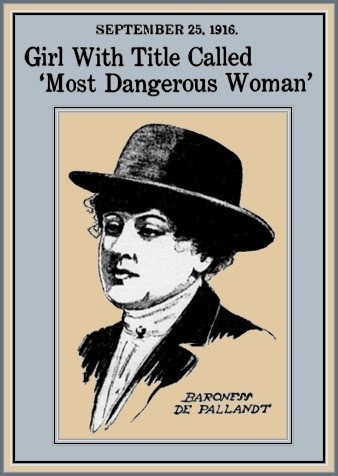
May Dugas rose from the dregs of poverty. After a brief stint as a prostitute, where she learned to use her beauty and graces to aquire numerous trinkets and baubles of value from her johns, she soon moved on to bigger and better things. Through the help of two friends, she sneaks her way into the parlors of high society where she encounters a young man of immense wealth. When his father hires a Pinkerton detective to snoop into her background, she is forced to break off her relationship.
The first of her troubles happens when one man sues her for failing to reimburse him for a string of pearls he bought for her. Later, there is an insurance pay out for the lost pearls. Not one to stay still for too long, May travels about Europe and spends time shoulder to shoulder with society's elite, collecting men, treasure, and houses along the way. She even married a wealthy Baron, but her ties to him never stopped her from her globe trotting. And always a step behind her was the Pinkerton detective who dubbed her the "Most Dangerous Woman in the World", a name this larcenous, con-artist baroness truly earned.
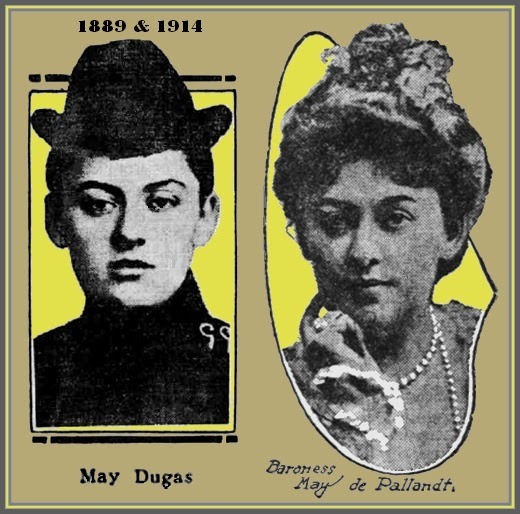
Author Maryka Biaggio has done an incredible amount of research into this fascinating woman's life. What is most engaging about this novel, is how the author is able to keep the reader bouncing between understanding and disapproving of May and her actions. One neither likes or nor dislikes her. I suppose that was part of her charm, otherwise, how could she have swindled so many people.
More importantly, the author brings to life the splendour and decadence of the Edwardian era with lush descriptions and historical detail.
I am always compelled to read stories of notorious bad girls, and this book does not disappoint in that regard. This was a fun, sinful read about a wicked dame and her bold machinations. Highly recommended.
An Interview with Maryka Biaggio
Author of Parlor Games
1. When did you first stumble upon the story of May Dugas?
In the summer of 2010 my parents and I were traveling through Menominee, Michigan, and decided to stop at their Information Center. Prominently displayed on a shelf was a pamphlet by Lloyd Wendt entitled Life of May Dugas of Menominee. It started with this line: “She was down in our files as the most dangerous woman in the world.” That got my attention! We straightaway drove to the Menominee Historical Society to purchase the pamphlet. When I expressed interest in May Dugas, the attendant showed me the only memento they had of her—a gorgeous bejeweled black gown. May was not only dangerous—she possessed a sense of style as well as the money to afford the best of attire.
2. What about May intrigued you?
Once I read Wendt’s write-up of May’s life (as told by his Pinkerton detective informant), I knew I had to write about her. The story posed so many questions: How much of a challenge was it for her to break out of societal expectations of the time? What motivated her? How did she feel about the men she extracted money from? Was she a victim of powerful men or did she lure them in with blackmail in mind?
3. Did writing this novel require special research or travel? Have you been to many of the places May visits in the book?
I did a great deal of research online about the period, customs, and events. But I also traveled. For instance, I visited the National Archives in Washington, DC, to search for May’s passport and travel records. While I was in San Francisco, I checked out her stomping grounds at the historic Palace Hotel. In Chicago I studied buildings that were in existence when she frequented the city. I had traveled in China in 1985, not too long after it opened up to outside visitors, and I drew on that experience in portraying May’s sojourns in the bustling cities of Hong Kong and Shanghai. A professional meeting had taken me to Mexico City in the 1990s, so I was familiar with its sights and the surrounding geography. I also arranged a trip to the south of France while I was working on the novel. I paid the requisite fee to enter the exclusive gambling lounge at the Monte Carlo Casino, where I was able to soak up the ambience of the scene—the beautiful, inviting decor, the serious expressions of the gamblers, and the shuffling of chips—just as May did during her visits there.
4. Which place that you haven’t visited would you most like to see?
The Chateau de Pallandt, the country estate of the Dutch Baron who May wed, is still in existence. May and the Baron were married on the grounds and lived there for many years before moving to London. This gorgeous property is now a luxury bed and breakfast owned by Baron and Baroness d' Hooghvorsis. I would love to go for a stay and gift a copy of my novel to the current proprietors.
5. How much of the novel is based on historical record?
All the key events in the novel are based on actual occurrences as reported in either Lloyd Wendt’s pamphlet or newspaper reports of the time. I wanted to be true to this woman’s fascinating life, which I hope heightens the reader’s interest in her. Of course, the daily events and conversations are my constructions, albeit designed to paint a picture of the larger events.
6. Without giving anything away, what were your favorite scenes to write?
Writing about May was such a delight! Once I found May’s voice, the story flowed rather easily. I especially enjoyed writing about her first big adventure in Chicago. It wasn’t easy going, and she really did need to call on her wits and wiles to avoid the pitfalls that many young women succumbed to in America’s big cities at that time.
7. May is a captivating character and many readers end up rooting for her. Did you want the readers to feel conflicted about May?
Absolutely. In order for May to have successfully traveled the world and entered the circles of so many interesting and wealthy men, she had to have charm and charisma. I wanted the reader to experience that firsthand and contemplate May’s motives for telling her story. Was she trying to dupe the reader or simply confide in and earn the trust and approval of her listeners?
8. May is quite a unique character. Do you see yourself in her at all?
I’d like to think I have a bit of clever resourcefulness about me. My family moved around a great deal during my childhood and adolescent years, so I had to learn to adapt to strange places, meet new people, and foster fresh friendships. Perhaps I gained some measure of adaptability and resourcefulness from that experience. I did have great fun trying to figure out how May pulled off her many exploits, but I myself am too encumbered with a diligent superego to ever attempt such intrigues.
9. How has your background as a professor of psychology helped you in your writing?
I hope that after eight years of study and thirty years of teaching clinical psychology I have translated some of what I know into my writing. Since I am knowledgeable about human development, personality functioning, and diagnostic categories, I tried to bring that understanding to bear in imagining May’s formative years, motives, and some of the self-delusions she may have operated under.
10. Was this your first writing effort outside of academia?
No, from an early age I was fascinated by fiction and have always wanted to write a novel. During my academic career I took some university courses in creative writing and dabbled in short stories. But it wasn’t until the year 2000 that I decided to take the leap into novel writing. I toiled over and submitted three novels for publication before I wrote Parlor Games. I view those novels as my proving ground. With each one, I felt my mastery improve, and I want to keep pushing myself to ever-greater writing challenges.
11. What’s your writing routine like?
I rise early, take a brisk walk, breakfast over articles about writing, and read the daily newspaper. Then I steal away to my study and write all morning, blocking out, as much as possible, the distractions of e-mail, phone, and doorbell, as well as the neighborhood children squealing at the school bus stop. I don’t schedule appointments during this time if at all possible. I like to immerse myself in writing for a good three hours every weekday. That time flies by, and my usually astute stomach sometimes forgets when lunchtime has arrived. I often use afternoons and weekends for research and other writing-related tasks.
12. Are there any authors, writing in either historical fiction or other categories, whom you’ve looked to for inspiration?
Barry Unsworth is one of my favorite authors. I had occasion to meet him at a writer’s conference a few years before his passing. We talked about two of my favorite books by him—Sacred Hunger and Sugar and Rum. He was charming and personable, and I will forever remember the wonderful conversation we shared. Barbara Kingsolver’s novel of a missionary family in the Congo, Poisonwood Bible, influenced me a great deal, particularly the skill with which she captured the voices of her varied characters. One of my favorite books about a real person is Joyce Carol Oates’ Blonde, a fine literary work that brilliantly evokes Marilyn Monroe’s complex personality. It’s my favorite book by Oates and she, in fact, has divulged that it’s one of her favorites as well.
About Parlor Games
The novel opens in 1917 with our cunning protagonist, May Dugas, standing trial for extortion. As the trial unfolds, May tells her version of events.
In 1887, at the tender age of eighteen, May ventures to Chicago in hopes of earning enough money to support her family. Circumstances force her to take up residence at the city’s most infamous bordello, but May soon learns to employ her considerable feminine wiles to extract not only sidelong looks but also large sums of money from the men she encounters. Insinuating herself into Chicago’s high society, May lands a well-to-do fiancé—until, that is, a Pinkerton Agency detective named Reed Doherty intervenes and summarily foils the engagement.
Unflappable May quickly rebounds, elevating seduction and social climbing to an art form as she travels the world, eventually marrying a wealthy Dutch Baron. Unfortunately, Reed Doherty is never far behind and continues to track May in a delicious cat-and-mouse game as the newly-minted Baroness’s misadventures take her from San Francisco to Shanghai to London and points in between.
The Pinkerton Agency really did dub May the “Most Dangerous Woman,” branding her a crafty blackmailer and ruthless seductress. To many, though, she was the most glamorous woman to grace high society. Was the real May Dugas a cold-hearted swindler or simply a resourceful provider for her poor family?
As the narrative bounces back and forth between the trial taking place in 1917 and May’s devious but undeniably entertaining path to the courtroom—hoodwinking and waltzing her way through the gilded age and into the twentieth century—we're left to ponder her guilt as we move closer to finding out what fate ultimately has in store for our irresistible adventuress.
About the Author
Maryka Biaggio is a former psychology professor turned novelist with a passion for history. Twenty-eight years after launching her academic career she took the leap from full-time academic to scrambling writer and now splits her time between fiction writing and higher education consulting work. More information about Maryka and Parlor Games can be found on MarykaBiaggio.com, including a discussion guide, historical information, recommended reading and a fun “Parlor Talk” feature. You can also find out more about Parlor Games onFacebook.
WE LOVE COMMENTS

From History and Women









Published on February 04, 2013 13:25
NEFERTITI: LADY OF ALL WOMEN
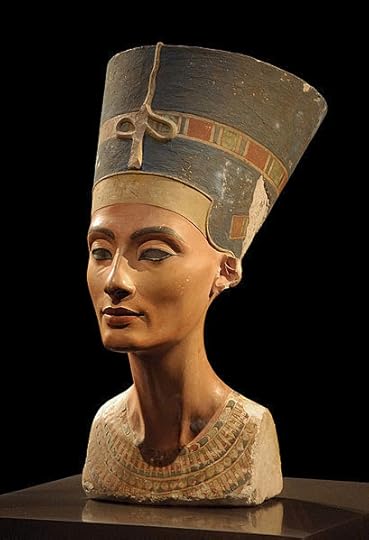
Philip Pikart: Neues Museum, Berlin
"Great of Praises; Lady of Grace; Sweet of
Love; Lady of The Two Lands; Lady of all Women; Mistress of Upper and Lower
Egypt."
These were all her titles; but we know her now simply as Nefertiti, the great
royal wife of the Egyptian pharaoh Akhenaten.
She was made famous by her bust: (a little
like Dolly Parton.) But Nefertiti's bust is now in Berlin’s Neues Musem, where it preserves her transfixing beauty for all time. This astonishing piece of art is attributed to the sculptor Thutmose. It has made Nefertiti the most famous Egyptian queen in history, with the possible exception of Cleopatra VII.
Her husband was Amenhotep IV and after they were married he built a temple dedicated to her at Karnak. It was called the Mansion of the Benben and, extraordinarily for the times, she was depicted in temple carvings almost twice as often as her
husband and in scenes that would have normally been the prerogative
of the king - such as taking a sword to the nation’s enemies.
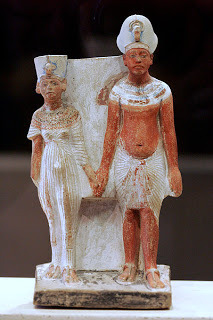
offered by LI and A Curtis. Photo:Rama
In the fourth year of his reign, he instigated
a religious revolution, moving his capital to Amarna and changing his name to Akhenaten, He decreed that Egypt would now worship just a single deity - abandoning all of Egypt's traditional gods for a single deity, the sun god, Aten.
Some scholars argue that it was Nefertiti (literally, 'the beauty has
come') who persuaded him to make this controversial move. She certainly embraced the change wholeheartedly. In all the statues and carvings of her she wears the same fashion as
God's Wife, a clinging
robe tied with a red sash, a short rounded hairstyle, a diadem bearing a double uraei.
She held a special position in Akenaten’s
esteem and affections: ".. Great in
the Palace, Fair of Face, Adorned with the Double Plumes, Mistress of
Happiness, Endowed with Favors, at hearing whose voice the King rejoices, the
Chief Wife of the King, his beloved, the Lady of the Two Lands,
Neferneferuaten-Nefertiti, May she live for Ever and Always."
They are seen in temple reliefs with their
family - they had six known daughters - in idealized poses. The king is depicted riding with her in a chariot,
or kissing her or with her sitting on his knee.
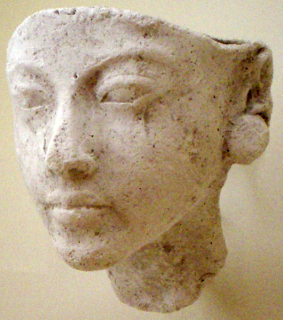
photo: Keith Schengili-Roberts
Nefertiti enjoyed unprecedented power and by the
twelfth year of his reign was possibly elevated to the status of co-regent, for women were not only basic to his romantic
and family life, but also his thinking and to his faith. The woman about Akhenaten were depicted in every
representation of ritual or state ceremony conducted by the king in honour of the
sun god.
She shared her husband with at least two other
royal wives. Each of the royal women had her own sanctuary, called
a 'sunshade temple,' an oasis of palms and water pools, for they were
considered vital in the renewing of the creation principle and communing with with the god Aten.
In fact, women were so highly valued in Atenhaten's Egypt, it is hard to find true comparisons in history.
But neither Atenhaten nor Nefertiti could live for Ever and Always. When he died, her likeness was carved onto the four corners
of his granite sarcophagus to protect his body, a place traditionally reserved for the female gods, Isis, Nephthys, Selket and Neith.
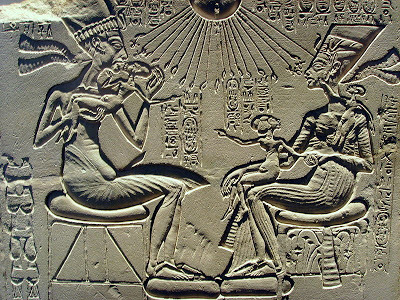
Around 1330 BC Nefertiti also disappeared from the royal records, and it is
suspected she died from a plague that was sweeping the city at that
time. Her mummy has never been found or identified.
Atenhaten's son, Tutankhaten became the next pharaoh. He changed his
name to Tutankhamun, abandoned Amarna and returned the seat of government
to Thebes and the state religion to the worship of Amun.
Nefertiti's time as Lady of All Women was brief; but thanks to Thutmose, we can still gaze at 'the beauty has come' forever.

Colin Falconer is the author of the internationally bestselling CLEOPATRA, DAUGHTER OF THE NILE and over twenty other novels.
See more history from Colin Falconer at
LOOKING FOR MR GOODSTORY
WE LOVE COMMENTS

From History and Women









Published on February 04, 2013 12:58
February 3, 2013
Vannozza dei Cattanei and her scandalous affairs and marriages
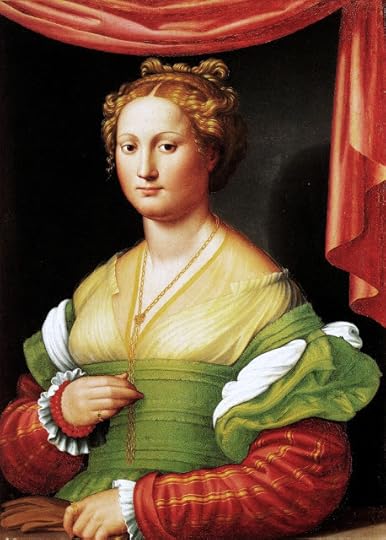
Vannozza dei Cattanei
Born into the lowest levels of
the Italian aristocracy, the beautiful and spirited Vannozza dei Cattanei was charismatic
and clever enough to run not one, but two inns, or ‘osterias’ as they are
called in Rome. It is likely there that her charms caught the attention of
Cardinal Giuliano della Rovere, whom she scandalously entered into an affair
with, despite his vows of celibacy. He later became Pope Julius II.
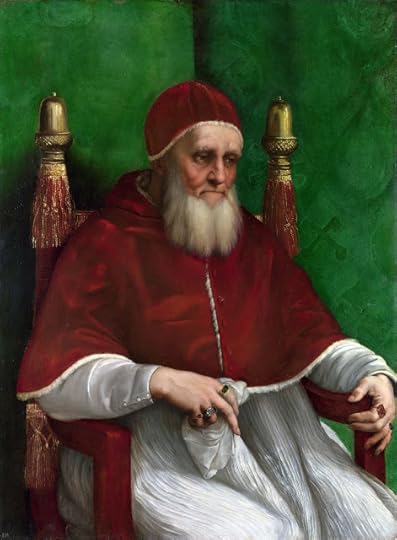
Giuliano della Rovere
Pope Julius II
In his elder years
In her inns, she lavishly entertained rich,
ambitious cardinals. Soon, the affair with Giuliano petered out and she turned
her attentions to Cardinal Rodrigo Borgia, from a very wealthy Spanish family. She
soon became his favorite mistress – not bad for a guy at the highest levels of
the church who is supposed to abstain from the sin of lust.

Rodrigo Borgia
Pope Alexander VI
When it came to Rodrigo,
she was obliging and compliant, never making demands, and always offering
helpful suggestions. He showed his appreciation by letting her use several of
his properties which she eventually managed to convince him to put solely in
her name. Oh, but that’s not all he gave her. In addition to properties, she
had full financial support and bought a vineyard, a country-house, and more
inns in highly desirable areas of Rome. As the years passed, she bore Rodrigo
four children: Juan, Cesare, Lucrezia, and Jofre.
But all good things must soon
come to an end and it was no different for this adoring couple. The Vatican soon
took note of their wayward son and his flagrant violation of the celibacy vows
that he had taken upon entering the Church. If he wanted to be in the running
to become the next pope, then poor Vanozza had to go. But how could he get rid
of his social climbing, materialistic, wealth-grabbing lover? The answer was
simple – marry her off to someone else, of course.
So Rodrigo presided over her wedding
to Domenico d'Arignano, a wealthy man who died a few short years later. With
Rodrigo’s help Vanozza married a man named Antonio da Brescia. When he died, in
order to continue to keep the mother of his children at arms’ length, and a
safe distance from Vatican eyes, Rodrigo chose another compliant husband for
his ex-mistress - Giorgio di Croce. In exchange for marrying Vanozza, Rodrigo made
him apostolic secretary. A good job, steady money, why not? So Vanozza married Giorgio
and moved into the same neighborhood as Cardinal Borgia's Palace on the Piazza
Sforza-Ceasarini.
Over the years, Vanozza continued
to be Rodrigo’s friend and confidante to many of his darkest secrets. When her
second husband died a wealthy man, Rodrigo set out yet again to find her
another suitable husband. This time, he chose a Mantuan named Carlo Canale, who
had many lucrative and useful connections. To seal the deal, Rodrigo provide a
dowry of 1000 florins and another high level job.
As Vanozza grew older, she became
a little wiser too. Establishing herself as a reformed sinner, she began donating
to charities and supporting convents. She remained in touch with her children.
When she died, she was given a
lavish funeral almost equally attended by Vatican officials as well as
citizens.
WE LOVE COMMENTS

From History and Women









Published on February 03, 2013 12:11
February 1, 2013
The Contessa's Vendetta by Mirella Sichirollo Patzer
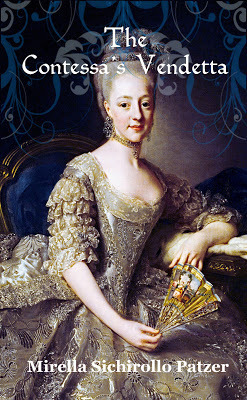
I'm very excited to announce that today, February 1st, and tomorrow, February 2nd, The Contessa's Vendetta, my historical suspense/thriller novel about an ultimate betrayal and a dark plot of revenge, is free today on Amazon!
Don't have a Kindle? If you have a smart phone, all you need to do is download the Kindle app and then download my book!
Click here to download!
Please tell a friend or two! I hope it will be as much fun reading it as it was to write.

WE LOVE COMMENTS

From History and Women









Published on February 01, 2013 12:14
January 28, 2013
False Pretences
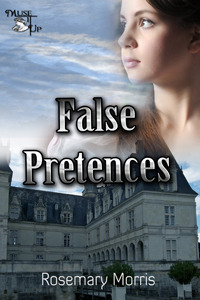
Back Cover:
Five-year-old Annabelle arrived at
boarding school fluent in French and English. Separated from her nurse, a
dismal shadow blights Annabelle’s life because she does not know who her
parents are.
Although high-spirited, Annabelle is financially
dependent on her unknown guardian. She refuses to marry a French baron more
than twice her age.
Her life in danger, Annabelle is saved by a
gentleman who says he will help her to discover her identity. Yet, from then on,
nothing is as it seems, and she is forced to run away for the second time to
protect her rescuer.
Even more determined to discover her parents’
identity, in spite of many false pretences, Annabelle must learn who to trust.
Her attempts to unravel the mystery of her birth, lead to further danger,
despair, unbearable heartache and even more false pretences until the only
person who has ever wanted to cherish her, reveals the startling truth, and
all’s well that ends well.
Review:
Rosemary Morris has penned a delightful romantic story about a young
woman named Annabelle in search of her family. Raised in a boarding school,
with no contact with any family member, and under the wardship of a guardian she has never
met, she runs away only to find herself in danger. Roland, a handsome man of
means, saves her from imminent danger. He takes her under his wing and together
they work to unravel a web of lies until the shocking truth of Annabelle’s past life is
revealed.
Rosemary Morris writes with ease and readability. Her characters are
well rounded, evolving as the plot unfurls. This novel has a bit of everything –
an endearing romance, a hint of mystery, dastardly villains, plenty of
suspense, and a memorable hero and heroine who will stay with you long after
you finish reading. The ending is intense as all the secrets are revealed, leading
to a highly satisfying conclusion. A lovely sweet romance worthy of all age
groups!
WE LOVE COMMENTS

From History and Women









Published on January 28, 2013 12:20
January 24, 2013
Elizabeth Murray - Royalist Rebel - A Novel by Anita Seymour
Elizabeth Murray, 2nd
Countess of Dysart, Lady Tollemache, Duchess of Lauderdale
Born September 1626 – died 5 June 1698
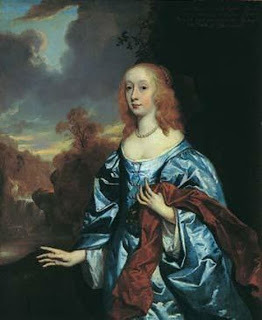
Elizabeth Murray aged 18 painted by Peter Lely in 1648
Which hangs in Ham House
Scotsman William
Murray, his wife Catherine Bruce Murray and their four daughters lived at Ham
House on the Thames at Richmond, a property given to them by King Charles I to
mark their close boyhood friendship when William would accept a whipping for
the transgressions of the young prince.
When the
Civil War broke out in 1642, as Gentleman of the Bedchamber, William joined his
royal master at the exiled court in Oxford after the Battle of Edgehill that
drove King Charles out of London. Created 1st Earl of Dysart for his loyalty, he
continued carrying messages through enemy lines.
In 1648, the
Murrays arranged a marriage between Elizabeth and Sir Lionel Tollemache, 3rd
Baronet, of Helmingham Hall in Suffolk, a wealthy and cultivated squire whose
family came to England with the Norman invasion. They had eleven children, of
whom five survived to adulthood.
Renowned
as a political schemer, Elizabeth was rumoured to have been Oliver Cromwell’s mistress
while also an active member of The Sealed Knot, the secret organisation
supporting the exiled King Charles II. Even before Earl Tollemache's death in
1669, Elizabeth, as Lady Dysart, was rumoured to have formed an attachment to
the ambitious John Maitland, 1st Duke of Lauderdale, Secretary of State for
Scotland.
Lauderdale’s
wife, jealous of her husband’s friendship with the widowed Lady Tollemache,
went to live in Paris and died there. Only a few weeks after her death, Lauderdale, now one of the most powerful
ministers of Charles II and Elizabeth scandalised London by marrying. Over the
next ten years the pair lavished money on Ham House, extending and refurbishing
it as a palatial villa reflecting the Duke's status. One of Elizabeth’s extravagances
was a garden on the west side of the house where she had forty cherry trees
planted, her favourite fruit which were exclusively for her own use.*
Lauderdale
eventually quarrelled with the King and after a stroke, died in 1682, leaving the
Duchess almost penniless. Elizabeth’s final years were spent in gentile poverty
at her beloved Ham House, vilified by society and abandoned by her children,
the triumphs of her remarkable life largely forgotten.
Inspiration For Royalist Rebel
If you visit
Ham House, which has been restored to the way it looked during Elizabeth’s
lifetime, this is the woman the guides talk about; an irascible, embittered
widow stripped of her glory. They hold ghost evenings at Ham, recounting tales of the old lady’s spirit that roams the mansion tapping the floors
with her stick, her small dog at her side while the scent of attar of roses
permeates her favourite rooms announcing her ghostly presence.
In the
gallery is the above portrait of Elizabeth, painted by Sir Peter Lely when she was
eighteen. This was the young woman I wanted to discover and subsequently began
writing about - the beautiful, intelligent and passionate young girl on the
verge of womanhood who was dedicated to Ham House, the Royalist cause and the
men in her life; her father William Murray, son of a minister who rose to
become King Charles’ friend and confidant, Lionel Tollemache, her husband of
twenty years who adored her, Oliver Cromwell who was fascinated by her, and
John Maitland, Duke of Lauderdale, Charles II’s favourite on whom he heaped
honours and riches, only to ostracise him after a bitter quarrel.
Royalist
Rebel is the story of that girl.
Anita’s Blog
– The Disorganised Author
Royalist
Rebel Blog- http://royalistrebel.blogspot.com
Ham House
Website
http://www.nationaltrust.org.uk/ham-house/
* During a recent visit to Ham House, Anita was told that the National Trust intend re-planting the forty cherry trees in
Elizabeth’s garden, just as it was in the 1670’s.
WE LOVE COMMENTS

From History and Women









Countess of Dysart, Lady Tollemache, Duchess of Lauderdale
Born September 1626 – died 5 June 1698

Elizabeth Murray aged 18 painted by Peter Lely in 1648
Which hangs in Ham House
Scotsman William
Murray, his wife Catherine Bruce Murray and their four daughters lived at Ham
House on the Thames at Richmond, a property given to them by King Charles I to
mark their close boyhood friendship when William would accept a whipping for
the transgressions of the young prince.
When the
Civil War broke out in 1642, as Gentleman of the Bedchamber, William joined his
royal master at the exiled court in Oxford after the Battle of Edgehill that
drove King Charles out of London. Created 1st Earl of Dysart for his loyalty, he
continued carrying messages through enemy lines.
In 1648, the
Murrays arranged a marriage between Elizabeth and Sir Lionel Tollemache, 3rd
Baronet, of Helmingham Hall in Suffolk, a wealthy and cultivated squire whose
family came to England with the Norman invasion. They had eleven children, of
whom five survived to adulthood.
Renowned
as a political schemer, Elizabeth was rumoured to have been Oliver Cromwell’s mistress
while also an active member of The Sealed Knot, the secret organisation
supporting the exiled King Charles II. Even before Earl Tollemache's death in
1669, Elizabeth, as Lady Dysart, was rumoured to have formed an attachment to
the ambitious John Maitland, 1st Duke of Lauderdale, Secretary of State for
Scotland.
Lauderdale’s
wife, jealous of her husband’s friendship with the widowed Lady Tollemache,
went to live in Paris and died there. Only a few weeks after her death, Lauderdale, now one of the most powerful
ministers of Charles II and Elizabeth scandalised London by marrying. Over the
next ten years the pair lavished money on Ham House, extending and refurbishing
it as a palatial villa reflecting the Duke's status. One of Elizabeth’s extravagances
was a garden on the west side of the house where she had forty cherry trees
planted, her favourite fruit which were exclusively for her own use.*
Lauderdale
eventually quarrelled with the King and after a stroke, died in 1682, leaving the
Duchess almost penniless. Elizabeth’s final years were spent in gentile poverty
at her beloved Ham House, vilified by society and abandoned by her children,
the triumphs of her remarkable life largely forgotten.
Inspiration For Royalist Rebel
If you visit
Ham House, which has been restored to the way it looked during Elizabeth’s
lifetime, this is the woman the guides talk about; an irascible, embittered
widow stripped of her glory. They hold ghost evenings at Ham, recounting tales of the old lady’s spirit that roams the mansion tapping the floors
with her stick, her small dog at her side while the scent of attar of roses
permeates her favourite rooms announcing her ghostly presence.
In the
gallery is the above portrait of Elizabeth, painted by Sir Peter Lely when she was
eighteen. This was the young woman I wanted to discover and subsequently began
writing about - the beautiful, intelligent and passionate young girl on the
verge of womanhood who was dedicated to Ham House, the Royalist cause and the
men in her life; her father William Murray, son of a minister who rose to
become King Charles’ friend and confidant, Lionel Tollemache, her husband of
twenty years who adored her, Oliver Cromwell who was fascinated by her, and
John Maitland, Duke of Lauderdale, Charles II’s favourite on whom he heaped
honours and riches, only to ostracise him after a bitter quarrel.
Royalist
Rebel is the story of that girl.
Anita’s Blog
– The Disorganised Author
Royalist
Rebel Blog- http://royalistrebel.blogspot.com
Ham House
Website
http://www.nationaltrust.org.uk/ham-house/
* During a recent visit to Ham House, Anita was told that the National Trust intend re-planting the forty cherry trees in
Elizabeth’s garden, just as it was in the 1670’s.
WE LOVE COMMENTS

From History and Women









Published on January 24, 2013 05:00
January 19, 2013
THE VIDA LOCA; JOANNA OF CASTILE
You may know Joanna of Castile's little sister better; Catherine of Aragon, Henry the Eighth’s first
wife. Joanna and Catherine were both capable, powerful and intelligent monarchs who fell victim to contemporary attitudes towards women.
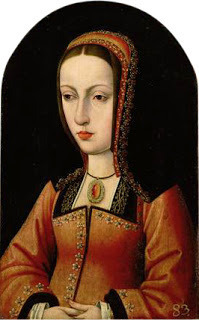
Cromwell said of Catherine: "If not for her sex, she could have defied all the heroes of History." Joanna had just as strong a character - and yet she became known to history as Juana La Loca -
Crazy Jo.
She was the daughter of Ferdinand and
Isabella of Spain. Like her sisters, she was groomed from birth to make a good
marriage and thus expand her parent’s sphere of influence. Her first lessons were French, needlework music
and dancing, everything required to make her a good medieval wife.
While still an
infant she was betrothed to Philip of Flanders, Duke of Burgundy and son of
the Holy Roman Emperor Maximillian.
She did not need
meet her future husband until she was sent to Flanders in 1496, when she was
seventeen.
But for an arranged marriage, it was extraordinarily successful; the two
fell in love at first sight.
Philip’s nickname was ‘Philip the Handsome’
and he apparently thought blue eyed strawberry blonde princess was easy on the
eye also; he insisted they get consummate the marriage almost as soon as she got off the ship.
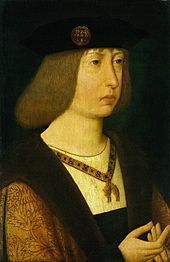
Unfortunately, the prince and his Spanish princess did not live
happily ever after; this was the fifteenth century, after all, and Philip did not see
marriage as an impediment to sleeping with the rest of the court.
Juana proved jealous and possessive; it was alleged that she attacked one of his mistresses, cutting off
her hair. In those days this was shocking behavior; a royal queen was supposed
to turn a blind eye. Juana's temperament was quite contrary.
In 1502, following the deaths of her
brother, her sister and her nephew, Juana became heiress to
the throne of Castile.
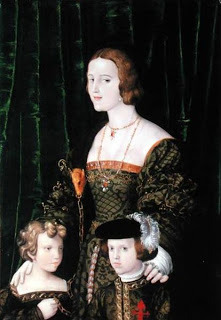
But when her mother, the queen, died two years later the grandees of
Castile were slow to proclaim Juana their new regent. It seems that after years of living in his wife's shadow her father, Ferdinand, coveted the throne for himself.
He
minted Castilian coins in the name of "Ferdinand and Juana, King and
Queen of Castile, Léon and Aragon," and then persuaded the Cortes
that Juana was too mentally unstable to govern.
Philip, however, minted his own coins in the name of "Philip and Joanna, King and Queen of Castile,
Léon and Archdukes of Austria.”
Late in 1505 Philip and Juana arrived in Castile and the country
was thrown into turmoil. Philip and Ferdinand tried to solve the impasse by
intriguing with each other, signing an agreement that Juana's mental
instability made her incapable of ruling and promising to exclude her from
future government.
But all Philip’s intriguing came to end when he died suddenly of typhoid; some historians have suggested that Ferdinand had him poisoned.
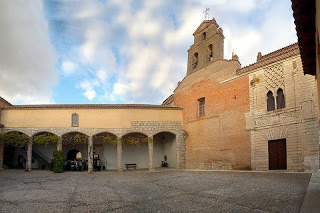
With the country riven
with plague and famine Juana was unable to secure the funds to protect her position.
Ferdinand took power, confining Juana to the Santa Clara convent in
Tordesillas near Valladolid. He claimed she was mad and therefore unfit to accept the crown.
If Juana was not mentally ill before being
locked away, her mental state was fractured by her confinement.
Even after her father's death in 1517 Juana’s position did not improve.
As soon as her son, Charles, had obtained from her the necessary authorization to assume the throne he confirmed that her lonely confinement would continue.
Her youngest daughter, Catalina, lived with
her at Tordesillas for sixteen years, but in 1625, she was kidnapped and
married off to King Juan III of Portugal leaving Juana bereft.

Juana lived on another thirty years, dying at
the great age, for those times, of 76. She was buried beside her husband Philip
in the Royal Chapel at Granada, across from the tombs of her parents Ferdinand and
Isabella.
Was La Loca really mad?
Did she really spend nights by a moldy coffin
talking to the corpse of her dead husband - as rumour would have it?
Or was she rather a political pawn,
betrayed by her father, her husband and her son, who exaggerated her symptoms for political gain?
Most historians now
agree that Juana suffered severe clinical depression or even a bipolar disorder inherited
through the family line, perhaps consequent to incestuous marriage practices.
But just how severe her symptoms were - and how ruthlessly she was manipulated by those around her - we shall never really now.
The mother of two emperors and four queens she spent much of her life shut away in solitude. Of all the great Spanish queens, her story is perhaps the most tragic.
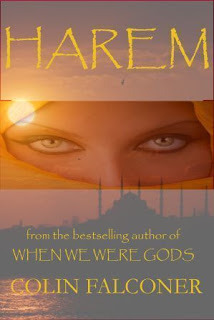
See a pictorial storyboard of Colin Falconer's novel 'HAREM' - the story of Suleiman the Magnificent and his queen, Roxelana HERE and more history from Colin Falconer at
LOOKING FOR MR GOODSTORY
WE LOVE COMMENTS

From History and Women









Published on January 19, 2013 21:08



